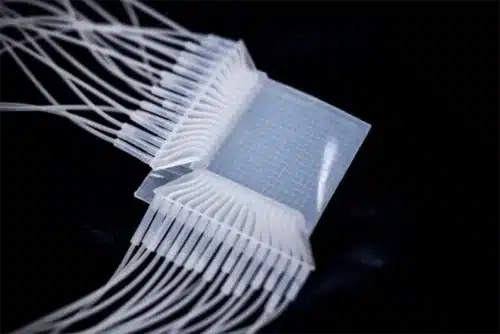Researchers at Tampere University have developed an innovative touchpad that detects location, force, and contact area without using electricity.

The recently innovated touchpad device developed by Tampere University, Finland is composed entirely of soft silicone, leverages embedded pneumatic tubes instead of electronic sensors, offering a unique solution for environments where electronic devices may fail or pose risks. The research opens new possibilities for applications in medical devices, particularly in high-radiation areas.
This touchpad’s structure includes 32 channels, each only a few hundred micrometers wide, which adapt to touch and capture precise data without electrical power. The device can recognize multiple touches simultaneously, enabling it to accurately detect handwritten letters and identify touch pressure, size, and location. According to Vilma Lampinen, Doctoral Researcher, Tampere University “ Electronic sensors may stop functioning in extreme conditions, such as in a strong magnetic field. Since the touchpad is not electric, a strong magnetic field does not affect it, which makes it ideal for use in devices such as MRI machines.”
The silicone-based material of this touchpad is highly adaptable, allowing integration into soft robotics, typically powered by pneumatics, such as advanced prosthetic hands. As Lampinen notes, “Soft robotic hands could be used to replace current prosthetic hands-on, e.g., production lines. Being soft, they are safer, lighter, and potentially cheaper to manufacture. Touch sensors around the hand would also enable a more delicate grip.”
The flexibility of this touchpad technology also makes it promising for wearable rehabilitation devices. With potential appeal to medical device manufacturers, hospitals, and robotic system developers, this technology has the potential to transform practices in clinical imaging and surgery. Further, this electricity-free touchpad represents a significant step forward in the development of safe, versatile, and highly adaptive technology in medical and robotic applications.






